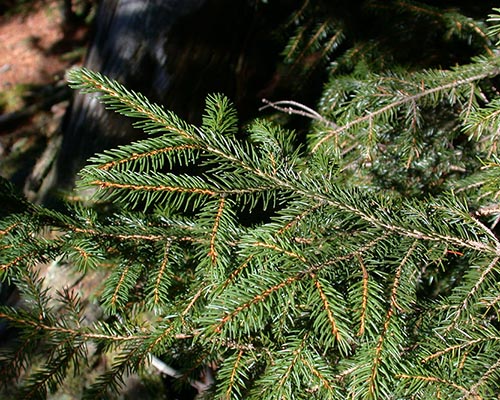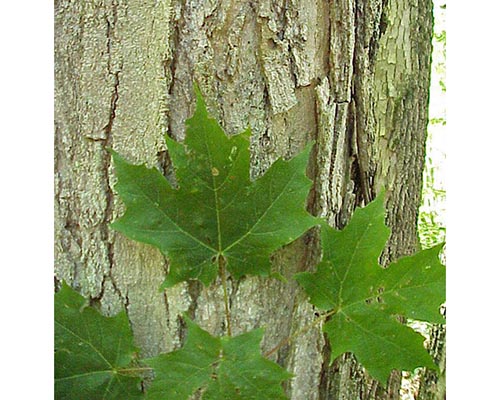Winter in the Adirondacks is no laughing matter. Temperatures can get as low as −52 F, the record set in 1979, and average temperatures in January are below 20 F. From December to March, snowfall is steady, with an average of 15–20 inches per month in many places. How do plants cope with this?
There are a variety of strategies. Many herbaceous or non-woody plants such as trillium and Dutchman’s breeches retreat underground after storing energy to survive the winter in below-ground structures such as corms or bulbs. The Spring Wildflowers station provides several examples of that. Other herbaceous plants, called annuals, live for one growing season and then produce seeds, which will be protected under the snow, thus avoiding harsh winter conditions. Black-eyed Susan (see Late Wildflowers station) is an example of this strategy.
Woody plants, on the other hand, have fairly permanent above-ground structures that must be maintained, so they have different strategies. Most conifers pursue the strategy of being evergreen. They keep their leaves throughout the winter (red spruce needles). Leaves represent an investment of both energy and nutrients. Evergreens retain that investment from year to year, giving them an advantage, particularly in areas that are nutrient-poor, such as sandy soils, or energy-poor, such as polar regions that receive little sun. However, there is a price to pay; evergreens must have very durable leaves, often with waxy coatings to prevent water loss. Conifers also often have needle-shaped leaves, reducing exposed surface area but decreasing photosynthetic efficiency. The Biomimicry station discusses some other adaptations of conifers to shed snow and maximize efficiency.
Many angiosperm trees (see Plant Evolution IV) pursue the deciduous strategy. Deciduous leaves are expendable as an adaptation to a long growing season. This annual loss of leaves sacrifices some nutrients and energy, but suitable reserves from the growing season are stored during the winter in the trunk and roots to produce new leaves the following spring. Over the winter, the tree protects its buds from the dry winter air under waxy scales to minimize water loss.
The poster child for this strategy is the sugar maple (Acer saccharum). The sugar maple has several clever adaptations to a deciduous lifestyle. First, it doesn’t simply drop its leaves in autumn. In the fall, the production of chlorophyll, the green pigment that drives photosynthesis, is brought to a halt. The chlorophyll manufactured in the leaves during the summer is broken down, releasing nutrients. This allows deciduous trees such as the sugar maple to re-absorb some of these nutrients before the leaves drop. As the chlorophyll is broken down, orange and yellow pigments in the leaves called carotenoids become visible. To some extent, these so-called secondary pigments were present all along, but were masked by the very high levels of chlorophyll in summer leaves. Some species also produce red anthocyanin pigments in the fall. Together, these processes change leaves to their brilliant fall colors that we enjoy in the Adirondacks.
Sugar maple’s other clever strategy is keeping high sugar levels inside its trunk and branches. This provides it with energy to make new leaves in the spring. It also acts as a sort of natural anti-freeze. Water with a lot of dissolved sugar freezes at a much lower temperature than pure water, and so frost damage to the tree is avoided. Of course humans have learned to exploit this, tapping the sugar-rich sap of the sugar maple to make maple syrup.
Sugar maples make the richest fall colors when they are in high-stress environments, because that is when they need to most aggressively conserve their resources. Much of the soil in the Adirondacks is sandy glacial till, left over from the retreat of the glaciers at the end of the last Ice Age some 15,000 years ago. These soils make for very poor farming and slow vegetation growth, but they also make for famously brilliant fall colors.


